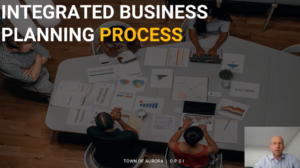Prioritization of projects and initiatives is often challenging and traditionally requires significant investment in administrative time and effort. The Town of Aurora has created a process that automates the prioritization of projects through an algorithm that scores projects based on Service Improvement, Financial Viability, Reputation Improvement and Ease of Implementation.
Innovation Summary
Innovation Overview
The organisational challenge that we faced was one of effective business planning. Many departments were not coordinating capital investment decisions and were unable to articulate the strategic merits or "strengths of projects" that would improve the citizen experience. The innovation was designed to coordinate all project information through one channel and automate the heavily administrative process of prioritizing hundreds of projects of different sizes, scopes and complexity.
The main objectives were improving the coordination of project information across the enterprise, speeding up the decision making process, ensuring strategic alignment of projects and enhancing financial and project accountabilities. By ensuring better coordination of information and prioritizing projects based on financial viability, service enhancement, ease of implementation and reputational development the residents of Aurora benefit from a more effective and efficient use of tax dollars. The innovation is already institutionalized and has been used for the prioritization of projects for the last 3 years. To scale it up, the process has been shared with surrounding municipal governments as well as some other industries. They have adopted the highly modular process to fit their organisational needs.
Innovation Description
What Makes Your Project Innovative?
The project takes into consideration the highly complex process of prioritizing project investment decisions and rather than only focusing on the financial benefits it considers service improvement, reputational development and ease of implementation through an in-house developed algorithm. The project now allows for the entire prioritization process to be completed instantly and results are automatically displayed for the management group. Previously the prioritization took months of meetings and debate.
What is the current status of your innovation?
The project has been implemented and used successfully to prioritize projects for the last few years. The prioritization approach is now being transferred to our new Enterprise Resource Planning system for continued integration with core business processes. We continue to enhance and refine aspects of the work, although the project is mostly working as it was designed.
Innovation Development
Collaborations & Partnerships
The collaboration to develop the project was internal. In total, 25 managers and 7 Executive Team members participated in the development of this process. Apart from this, external organisations have sought out our team to demonstrate the process to them so they could adapt to their business.
Users, Stakeholders & Beneficiaries
The management group was impacted positively, the innovation reduced significant time dedicated to administrative details and unnecessary debate. Automatic project information and evaluation has enhanced collaboration and strengthened the focus on the citizen experience.
Innovation Reflections
Results, Outcomes & Impacts
The main impacts of the process are as follows
- Reduction of administrative burden
- Increase in levels of collaboration across the organisation
- Improving the execution of projects
- Enhancing the effectiveness of the Town's finances
Challenges and Failures
The main challenge of the project was to shift the thinking of the organisation from a manual mindset to trusting a pre-programmed machine to do the priority work. This was overcome by involving all of the management and executives in the development of the project and ensured the highest possible buy in.
Conditions for Success
- Executive champions
- Available technology
- Engaged Project Champion/Manager
- Strategic objectives
Replication
External organisations have sought out the Project Manager to adapt the work to their unique businesses. The project is modular and can be scaled by module or in its entirety. All parts can be replicated.
Lessons Learned
The main lesson learned is to persevere and be consistent. Accomplish small goals weekly, then monthly. The addition of all the small goals and the result will speak for itself.
Supporting Videos
Status:
- Implementation - making the innovation happen
- Evaluation - understanding whether the innovative initiative has delivered what was needed
- Diffusing Lessons - using what was learnt to inform other projects and understanding how the innovation can be applied in other ways
Date Published:
25 July 2023


